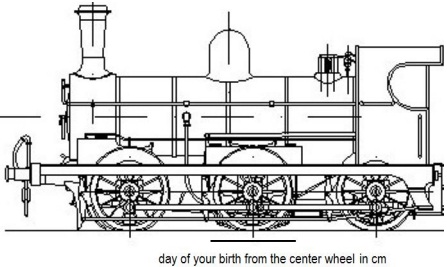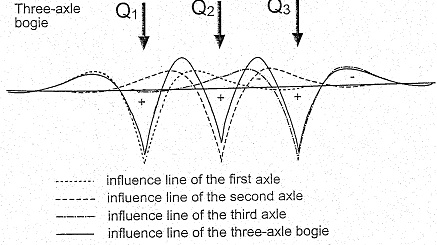Reference no: EM131041104
Topic is ballast and sub-ballast aggregates, I want 1 page Introduction, 10 pages main body, 1 page conclusion and 2 pages Reference, Appendix & Report Guideline
OBJECTIVE:
The aim of this module is to develop practical and analytical understanding of the complex and multi-disciplinary nature of railways, and to provide students with an understanding of the economics of designing, building, maintaining and renewing them. It covers the theory and practice of permanent way design for railways, and includes the interfaces with other disciplines. Students will apply their learning to design work.
OUTCOMES:
1. Employ methods of analysis for railway economics.
2. Apply understanding of the key issues in operations and safety.
3. Evaluate the principles of maintenance and performance.
4. Calculate and tabulate data for plain line design.
5. Apply industry standards in gauging and clearances design, including use of software, and demonstrate understanding of situations in which standards are not appropriate.
6. Demonstrate understanding of the contents and use of industry manuals of trackbed and drainage design.
Task 1:
Suppose that you are technical engineer in a railway company (trading, manufacturer, Vendor). You may be the owner of factory that has product line of one of railway track components such as fastening systems, Rail Joints, Sleeper (wooden, concrete, Steel, composite), welding system, machineries, .etc. In addition, you may have quarries for ballast and sub-ballast aggregates (formation layer) to produce suitable ballast aggregate for railway track.
For selling your products if you want to demonstrate and identify your productions or supply and provide the components, the client/buyer ask you to prepare a technical report involving all technical aspects to illustrate the capabilities and usage. So, Students are requested to prepare a technical report including:
- Product Description
- Design steps
- Technical specification
- Using and installing method
- Machinery with is needed to implement.
- Operation and Maintenance aspects
- Product illustration with sufficient and adequate pictures
- Cost of your products
- Condition and place of using (weather, max/min temperature, working restrictions)
- Other related things.
For doing the project, you can select one of the track component arbitrarily and choose one company (real or virtual) through the world to use its technical data and information.
Please note that proper referencing and paraphrasing must be carried out when using a document as a reference for your work. It is necessary to cover most of feasible and probabilistic technical questions from client/buyer side in your report clearly.
In the end (conclusion part), make tabular information as far as possible in a glance for your mentioned production.
Note: These are some more information where students still can propose after module leader approval.
Report Sections
The report should contain the following sections:
- Introduction
- Main body
- Conclusions
- References and contacts
1. Introduction
- What is your products?
- Company history and information, establishing, capability, capacity,...
- Give the general plan of the report
2. Main body (maximum 10 page)
- Discuss the properties of products,
- Answer to the mentioned items above.
- Get the results and analysis if any.
- Headings should be informative and descriptive providing a clue to the contents of the section.
- Use suitable and accurate references for each paragraph that you take from others
- Each picture should have capture and a reference(s)
3. Conclusions (maximum 2 page)
- Synopsis
- State briefly, what the major specification are and provide tabular data.
4. References
List alphabetically your references which should include: Journal papers, proceedings, books, book chapters, internet sources etc.
Students must refer to Student Handbook for refereeing method preferred in Middle East College.
5. Appendix
Any additional figures, tables, and photos.
6. Report Guidline:
- The size limit: the number of pages should be from 5 to 15 pages, additional pages can be used as appendix.
- Generally use 1.5 x line spacing unless advised. Text Font Number must be typed in your own words and computer typed using Times New Roman, Cambria, and Calibri font size 12.
- Heading should be with Font Size 14, Bold.
- Start with the title page including student name, ID number and Session as requested.
- It is generally better to place figures within the text rather than group them at the end of the report.
- Give a sequential number to all figures (Fig. 1, Fig. 2, Fig. 3, etc.)
- Add a brief, informative caption to the figures.
- Give a sequential number to all tables (Table 1, Table 2, Table 3, etc.), with informative title.
- Use page numbers.
- Use Diagrams and Examples to explain your topic.
Task 2 :
Three wheels of a co-co bogy of locomotive are equal-spaced with center-to-center distance of 150 cm. all wheel are carrying a static load of 10 tons. Calculate the dynamic bending moment and deflection of rail with Winkler's theory under the point that is demonstrating as below;
Find the deflection and moment right and left side of center wheel in cm regarding the day of your birth. Consider:
- Rail is UIC 60E1 profile.
- Use AREMA dynamic factor formula.
- Track modulus is 30 MPa (N/mm2)
- Young's modulus of the rail steel is 210 GPa (KN/mm2)
- Speed 140 km/h and wheels diameter are 900mm

(i.e. you were born 23/6/1990 , it must be found the deflection and moment of rail, right or left side of center wheel with distance of 23 cm)

For easy solution, better to use superposition principle. See picture below.

Guideline:
Answer clearly (step by step) in maximum five pages.